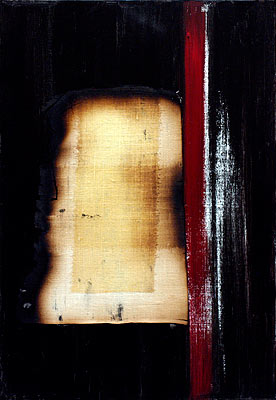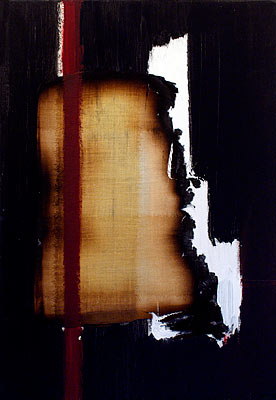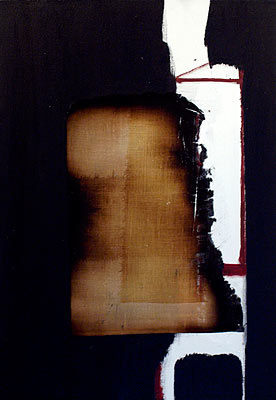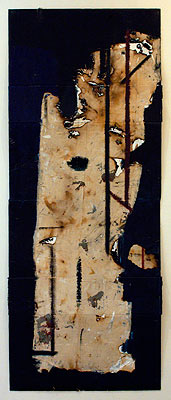PETER SACKS
27 March – 9 May 2004Merged, however much conflictually, with this source, is the incommensurable power, mystery and magnificence of the natural world of that continent. The natural world, and the primitive world, both on a very large scale, figure prominently in the creation of Sack’s sensibility, and are crucial to an understanding of the ways in which the mythic, the primeval and the historical merge and clash in his work. The human form and the inhuman icon: Sacks’ is work that sees art as that which transacts –as tough carrying a current- between the realms of the natural and of the supernatural, between the realms of man and spirit, of wildness and the blunt force of just or unjust law. Everywhere such forces are the characters of these dramatic abstractions –abstract only inasmuch as wordless lines of force cross territories, imprint, leave tracks and haunt a life, in this case a life which would go on to search for expression in poetry, literary scholarship, and painting.
Sacks studied in England, at Oxford, as well as in the United States, at Princeton and Yale (where he wrote, as his thesis, a book that is still a landmark study of the Elegy in English Poetry). All though this time, though, restlessness, combined with immersion in Poetry and the study of Art and the History of painting –form the rock-art of Southern Africa to the frescoes of the early Renaissance, from the funerary portraiture of Egypt to the entangled figurative and abstract heritages of Modernism- led Sacks to years of travel, oftentimes on foot. Walks across South America, North America, Northern Africa, Europe and parts of Asia, comprised a great deal of his inner and outer training on a formal as well as cultural and intellectual level.
In addition, the shifting confluences of poetry and painting (Sacks is also the author of five volumes of poetry) –elements of narrative, music, metaphor or symbol- as well as those of envisioning rather depicting, evoking rather than redefining- arrive at visual forms at once bodily, topographical and architectural. Fragments of a larger, perhaps ritualistic, structure always seem to surround individual works. One senses the presence of battlegrounds of ancient and yet contemporary history. A procession of figures moves through some perhaps.
Purgatorial region, come place caught between birth and catastrophe, between despair and survival. His recent paintings challenge our assumptions of what might or might not be human, whether in ourselves, or in the marks we make upon the spaces we inhabit, construct, deform or save. If his poetry finds words for what we are not otherwise saying or hearing, then his painting searches out the forms we are in danger of not “seeing”. Or of no longer seeing. Or of not yet seeing.
Most of the new work is oil, acrylic, gesso and medium on canvas. Some use materials that are literally burned or scorched, torn or stained, with injury inseparable from the fabric of making, and with acts of finding and rescuing (pieces of used cardboard boxes, abandoned newspapers, lost music scores, linens only partly saved from a house fire) still bearing the traces of displacement and loss.
Peter Sacks divides his time between his home and studio in France and Cambridge, Massachussetts, where he is the Marquand Professor of Literature at Harvard University.
This is the first showing of his work in France.






